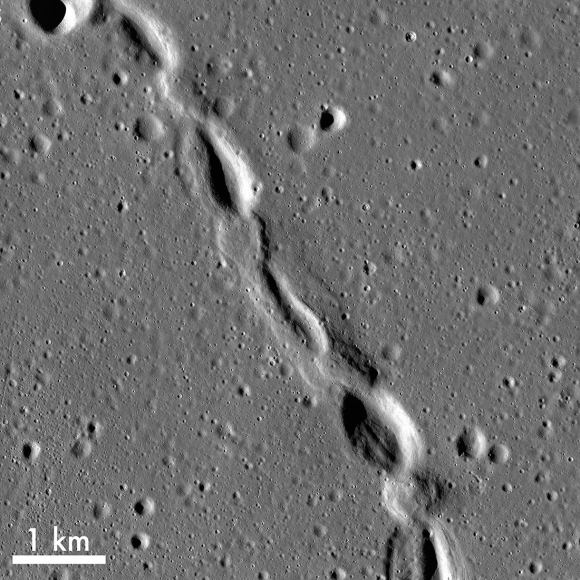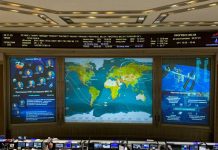This supports the theory that there may be lava tubes on the Moon large enough to be used for lunar bases.
The Moon was once geologically active, with active volcanoes and lava flows. The airless environment perfectly preserved traces of this past, which today can be seen in the form of dark deposits, volcanic domes, and cones. But the most recognizable features are the ancient lava tubes. Recently, the Lunar Reconnaissance Orbiter (LRO) camera captured images of one such 48 km-long “sinuous groove” on the Moon’s northern hemisphere.
Lava tubes have been observed on various objects in the solar system, including the Moon, Mars, and Mercury. On Earth, they were formed by volcanic eruptions, where flowing lava cooled and formed a crust on the surface. This crust sealed the lava inside, allowing it to flow for considerable distances before solidifying. Over time, these lava tubes can collapse due to seismic activity or meteorite impacts, creating a chain of pits and holes.

Scientists have discovered traces of collapsed lava tubes on the Moon
Such a groove, imaged by LROC, was discovered near the Gruithuisen crater in the Ocean of Storms. This is the largest “ocean” on the Moon, its area is 4 million square kilometers, and occupies 10.5% of the Moon’s surface. The large crater at the top left of the image may be the source of the lava flow. He formed a lava tube, which, according to scientists, can have a diameter of up to 500 meters in some places.
This confirms previous research that indicated the Moon could have lava tubes up to 10 kilometers wide and hundreds of kilometers long – large enough to accommodate entire cities.
Other studies indicate that the temperature in these tubes may be stable, averaging around +17 °C, while surface temperatures range from +127 °C during the day to –173 °C at night. In particular, for these reasons, NASA, China, and other space agencies are considering stable lava tubes as potential sites for future lunar bases.
In addition to space and acceptable temperature conditions, they can offer protection from cosmic radiation, solar flares, and meteorite impacts.




